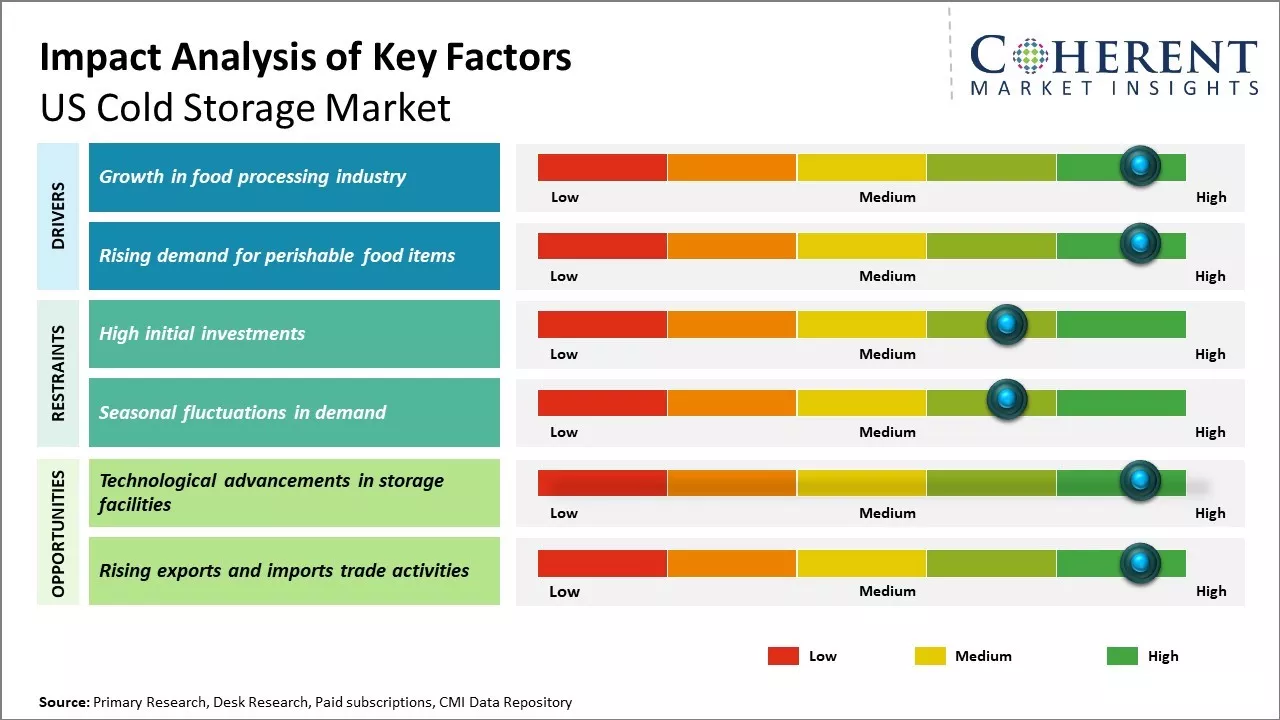The US cold storage market is estimated to be valued at USD 46.47 Bn in 2025 and is expected to reach USD 104.75 Bn by 2032, exhibiting a compound annual growth rate (CAGR) of 12.3% from 2025 to 2032.

To learn more about this report, Request sample copy
The cold storage market in the US is expected to witness significant growth during the forecast period driven by rising consumption of perishable foods such as dairy products, fruits & vegetables, meat, and seafood. There is growing demand for temperature-controlled warehousing and transport vehicles to store and transfer perishable products seamlessly. Furthermore, increasing consumer expectations regarding product availability throughout the year and rising penetration of e-commerce are fueling the demand for cold storage facilities in the country. Rapid urbanization and changing lifestyles are also contributing to the growth of the U.S. cold storage market.
Growth in food processing industry
The food processing industry in the U.S. has seen tremendous growth over the past few decades. For instance, in 2022, the economic output of the food manufacturing industry in the U.S., measured by Gross Regional Product (GRP), and reached an impressive US$181 billion. This figure represents just over 1% of the total economic output across all industries in the U.S., highlighting the vital role that food processing plays in the national economy. As consumer demand and tastes have evolved, more and more food items are undergoing various processing methods before reaching the shelves. This involves activities like baking, cooking, freezing, canning, packing, and others. As the demand for processed and packaged food has increased sharply, it has propelled food manufacturers to ramp up production. However, producing such large volumes of food comes with its own set of challenges. Perishable raw materials and semifinished goods need to be stored properly to ensure quality and safety. This is where cold storage facilities have become extremely important.
Most food processing plants now outsource their cold storage needs rather than establishing in-house infrastructure. Advanced cold storage warehouses with state-of-the-art refrigeration systems provide ideal temperature and humidity-controlled environments for short as well as long-term storage of various agro commodities and food items. Being able to store raw materials efficiently especially during the harvest season ensures undisrupted production activities in food plants throughout the year. Likewise, finished food products can also be kept in optimal conditions in cold warehouses before being shipped to different distribution channels. This ability of third-party cold chains to act as an extension of the production facility has vastly helped food manufacturers to scale up their operations.
The trends of consolidation and mergers & acquisitions in the food industry have further boosted demands on cold storage. When two or more companies integrate their businesses, there is a need to centrally warehouse all inventory. Centralized storage management becomes vital to maintain control over supplies and meet production needs of multiple facilities. Advanced cold storage hubs have effectively addressed such requirements of combined inventory handling from large conglomerates. As the food processing sector expands continuously to meet growing consumption, it will keep relying on cold chains for uninterrupted production turnover and ensuring product freshness all year round.
Joining thousands of companies around the world committed to making the Excellent Business Solutions.
View All Our Clients